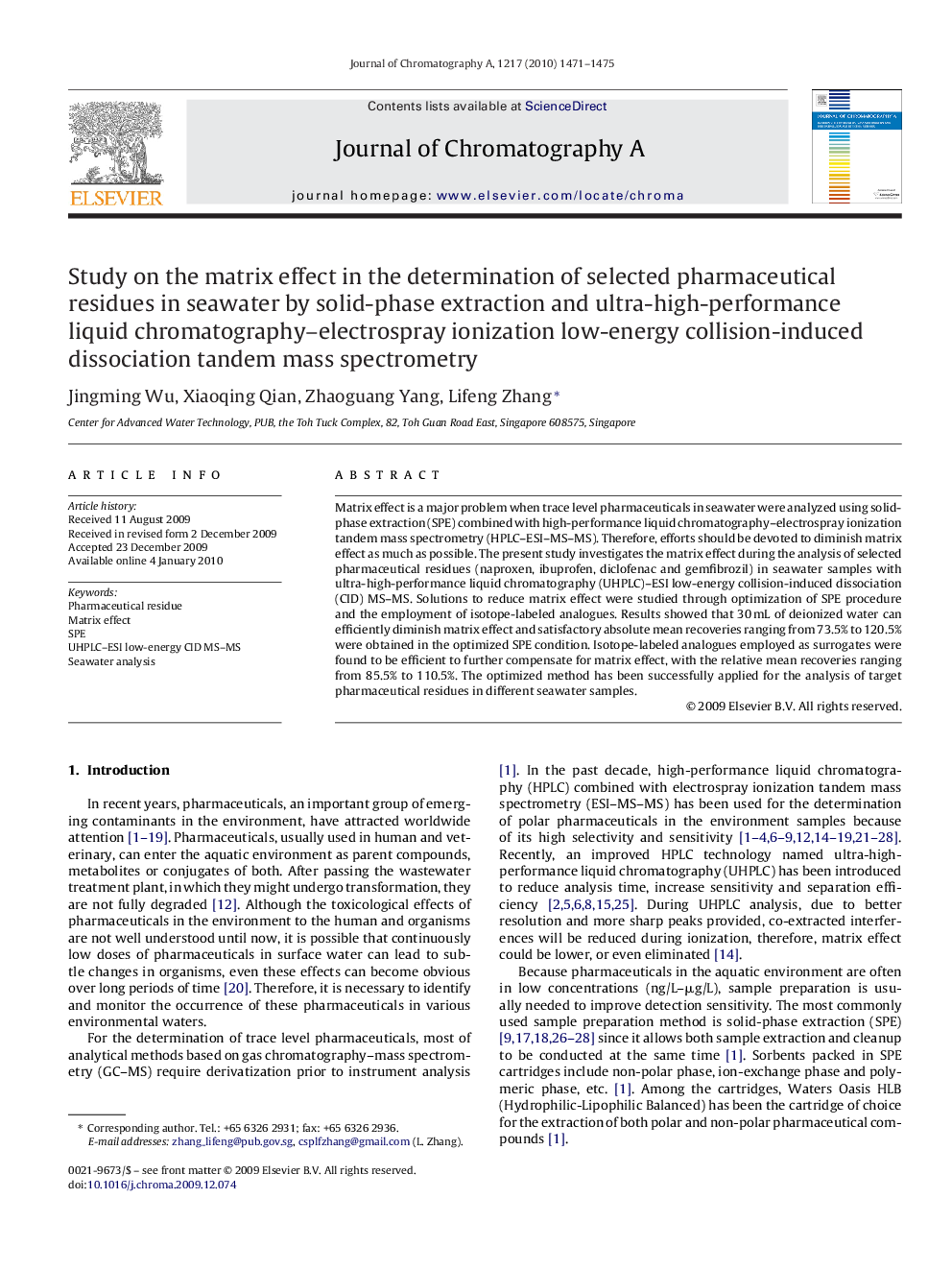| Article ID | Journal | Published Year | Pages | File Type |
|---|---|---|---|---|
| 1203741 | Journal of Chromatography A | 2010 | 5 Pages |
Matrix effect is a major problem when trace level pharmaceuticals in seawater were analyzed using solid-phase extraction (SPE) combined with high-performance liquid chromatography–electrospray ionization tandem mass spectrometry (HPLC–ESI–MS–MS). Therefore, efforts should be devoted to diminish matrix effect as much as possible. The present study investigates the matrix effect during the analysis of selected pharmaceutical residues (naproxen, ibuprofen, diclofenac and gemfibrozil) in seawater samples with ultra-high-performance liquid chromatography (UHPLC)–ESI low-energy collision-induced dissociation (CID) MS–MS. Solutions to reduce matrix effect were studied through optimization of SPE procedure and the employment of isotope-labeled analogues. Results showed that 30 mL of deionized water can efficiently diminish matrix effect and satisfactory absolute mean recoveries ranging from 73.5% to 120.5% were obtained in the optimized SPE condition. Isotope-labeled analogues employed as surrogates were found to be efficient to further compensate for matrix effect, with the relative mean recoveries ranging from 85.5% to 110.5%. The optimized method has been successfully applied for the analysis of target pharmaceutical residues in different seawater samples.
